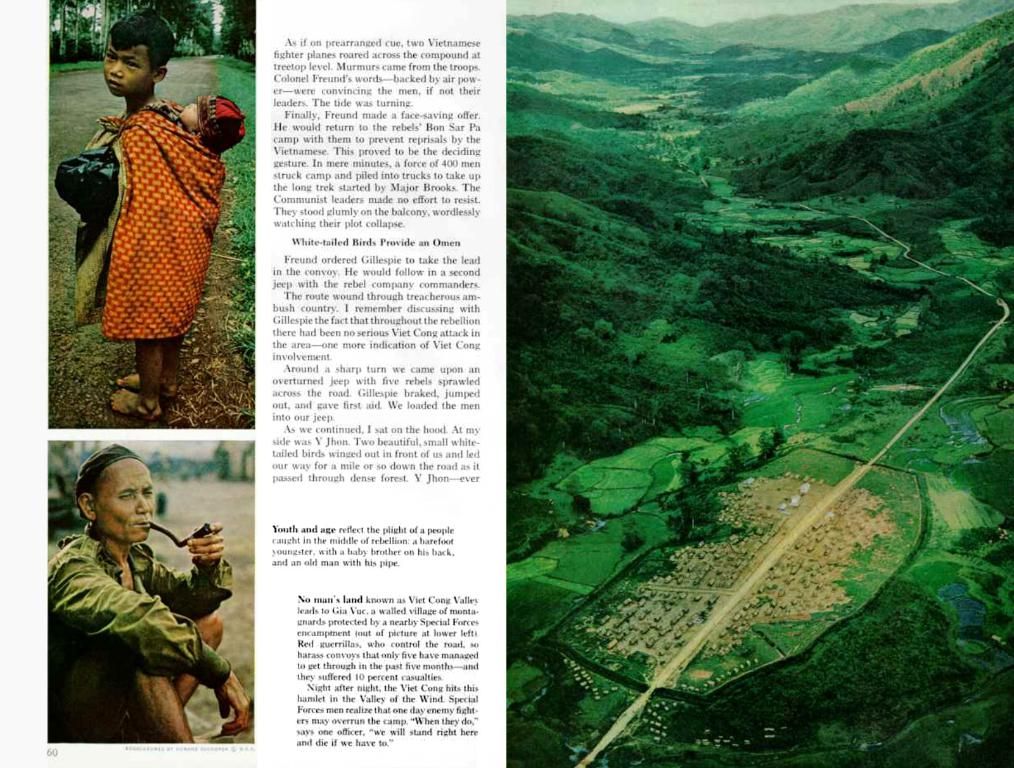Forest Challenges in the Bavarian Alps: Humus Loss and Nature's Response
Climate change is causing a substantial humus loss in forests located in the Bavarian Alps and adjacent low mountain ranges. This trend has led to less stable mountain forests, according to Axel Göttlein, the head of the Chair of Forest Nutrition and Water Balance at the Technical University of Munich. He explains that humus depletion results in reduced water and nutrient storage capacity in the soil.
Humus soils on bare rock are particularly at risk when humus disappears. Once humus vanishes from such sites, what remains is unsuitable for forestry – only rock remains. Göttlein warns that the loss of forest areas due to humus loss may not be insignificant. He estimates that around 17% of the forest area in the Bavarian Alps might be jeopardized.
Climate change exerts a significant impact on the Alpine regions, leading to more frequent and severe heavy rainfall events, such as the one in Berchtesgaden or this year in Slovenia.
To tackle this issue, it's suggested to foster more mountain mixed forests. Göttlein emphasizes the value of several tree species coexisting, like spruce, beech, fir, and sycamore maple, rather than relying on a single species. In his view, having diverse tree species increases forest resilience, as each species possesses specific adaptations making them better suited for certain conditions. If one tree species starts to struggle, others can maintain forest functions.
Mitigating the Impact of Humus Loss
Climate change-induced humus depletion can be countered through the synergy of sustainable forestry practices and ecological restoration strategies. Here are some proven approaches that focus on mountain mixed forests for boosting resilience:
1. Sustainable Forest Management - Reduced disturbance: Minimize human-caused disturbances, such as heavy tourism, to prevent soil erosion and protect humus levels. - Selective logging: Retain canopy cover and reduce soil exposure by employing selective logging techniques, avoiding widespread deforestation. - Forestation/reforestation: Introduce native species adapted to local climates and soil conditions to stabilize the soil and maintain humus levels.
2. Ecological Restoration - Soil conservation: Apply measures to reduce soil erosion, covering it with natural barriers like tree roots, and through human interventions like terracing. - Mulching and composting: Implement organic mulch application and composting processes to enhance soil health and increase humus content. - Afforestation/reforestation: Restore degraded areas with a mix of cold-adapted native tree species to maintain biodiversity and ecological balance.
3. Mountain Mixed Forests' Role - Canopy cover: Mountain mixed forests with dense canopies can provide cooling effects, reducing soil temperature and discouraging rapid humus decomposition, especially in temperate mountain forests. - Topographic refugia: The varied topography of mountain areas creates microclimates that shelter cold-adapted flora and fauna, boosting ecological resilience. - Soil moisture and stability: Mountain mixed forests can impact microclimate and soil moisture levels, reducing erosion risks and securing soil stability.
4. Integrated Management Approaches - Multi-scale management: Adopt environmentally-sensitive management strategies that consider both local and large-scale ecological processes. - Community engagement: Encourage local communities to participate in eco-conscious forest management practices, preserving cultural customs while promoting sustainability.
By integrating these methods, climate change-induced humus depletion in the Bavarian Alps can be curbed, and mountain mixed forests' resistance can be strengthened.








